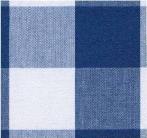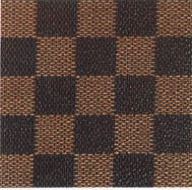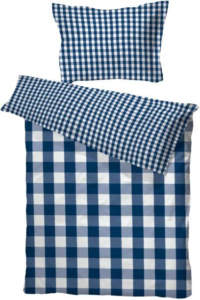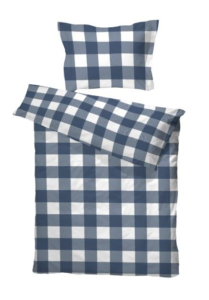The Swedish company producing high quality beds Hästens Sängar AB (hereafter “Hästens”) has in several jurisdictions (DK, EU, US, SE, NO, CH, FI, ES etc.) applied for the mark  (hereafter “the figurative mark”) or variations thereof.
(hereafter “the figurative mark”) or variations thereof.
Recently, in T-359/12 (C-363/15) Louis Vuitton Malletier’s mark  was refused by the Court. For this reason it was evident that Hästens’ applications were rejected as the mark lacked distinctive character per se as it can be seen as purely decoration for inter alia beds, bed linen, clothes and retail services in Classes 20, 24, 25 and 35. Hästens did not file evidence of acquired distinctive character in e.g. Denmark and EU. Neither when invalidity requests were filed against older registrations for the figurative mark based on Article 7(1)(b) EUTMR or the equivalent in national law.
was refused by the Court. For this reason it was evident that Hästens’ applications were rejected as the mark lacked distinctive character per se as it can be seen as purely decoration for inter alia beds, bed linen, clothes and retail services in Classes 20, 24, 25 and 35. Hästens did not file evidence of acquired distinctive character in e.g. Denmark and EU. Neither when invalidity requests were filed against older registrations for the figurative mark based on Article 7(1)(b) EUTMR or the equivalent in national law.
Hästens has an aggressive approach in Denmark towards other competitors selling bed linen with a blue and white checked pattern sending out cease & desist letters. When the competitors do not comply they risk ending up in court. On 14 August 2017 the Danish Maritime and Commercial High Court (hereafter “the Court”) passed judgement in a case initiated by Hästens against two distributors of bed linen and four of their Danish customers. Gorrissen Federspiel represented all six defendants.
Hästens claimed that they had acquired a trademark right in Denmark to the figurative mark based on use and reputation for beds. To support the claim for reputation Hästens among others filed:
1) List of retailers
2) Print-outs from https://www.hastens.com/en and number of Danish visitors
3) Press coverage and marketing campaigns both in magazines and TV
4) Marketing surveys
5) Sales figures and marketing expenses (this information is on request from Hästens not reproduced in the decision and therefore kept confidential for third parties)
Prior to the court case all Hästens’ purely figurative trademark registrations covering Denmark were invalidated due to lack of distinctive character.
As a starting point the Court confirmed that the figurative mark did not process distinctive character per se. The Danish Trademark Act states that it is not possible to establish a trademark right based on use to non-distinctive marks, unless the non-distinctive mark has acquired distinctive character through use.
Based on the evidence listed above the Court found that Hästens had established a trademark right in Denmark based on use to the figurative mark for beds. Hästens is the only one on the Danish market manufacturing beds decorated with blue and white checks and considering the intense marketing campaigns it seems reasonable to come to that conclusion.
In a market survey from 2016 75% of the respondents recognised the figurative mark as belonging to Hästens when exposed to Hästens marketing material. On this basis the Court found that already 11 years earlier (in 2005) the distinctive character of the figurative mark is enhanced for beds. It might have been difficult for the judges to leave out of account the present reputation/perception of the figurative mark.
The court case only concerns bed linen with blue and white checks. The Court only considered a trademark right based on use to be established for beds and not bed linen. Anyway, the Court chose to enhance the scope of protection of the figurative mark also to include bed linen based on the enhanced distinctive character of the figurative mark for beds, as they found beds similar to bed linen as bed linen is complementary to beds.
It is important to note that simultaneously with Hästens’ presence on the Danish market (since 1993) two other designs of bed linen with blue and white checks have been sold since mid-1990  and 2005
and 2005  . The defendants are allowed to continue selling the bed linen with blue and white checks that have been on the market since mid-1990’s, as Hästens’ figurative mark was not considered a trademark at the time. The Court found likelihood of confusion (including enhanced distinctive character of the earlier right) between the figurative mark and the defendant’s bed linen which has been sold since 2005. Likelihood of confusion is found despite differences in the size of the checks (Hästens 5.2 x 5.2 cm vs 6.4 x 6.4 cm). Acquiescence is also rejected by the Court despite that bed linen from Hästens and the defendants have been sold in the same shops for years.
. The defendants are allowed to continue selling the bed linen with blue and white checks that have been on the market since mid-1990’s, as Hästens’ figurative mark was not considered a trademark at the time. The Court found likelihood of confusion (including enhanced distinctive character of the earlier right) between the figurative mark and the defendant’s bed linen which has been sold since 2005. Likelihood of confusion is found despite differences in the size of the checks (Hästens 5.2 x 5.2 cm vs 6.4 x 6.4 cm). Acquiescence is also rejected by the Court despite that bed linen from Hästens and the defendants have been sold in the same shops for years.
_____________________________
To make sure you do not miss out on regular updates from the Kluwer Trademark Blog, please subscribe here.


